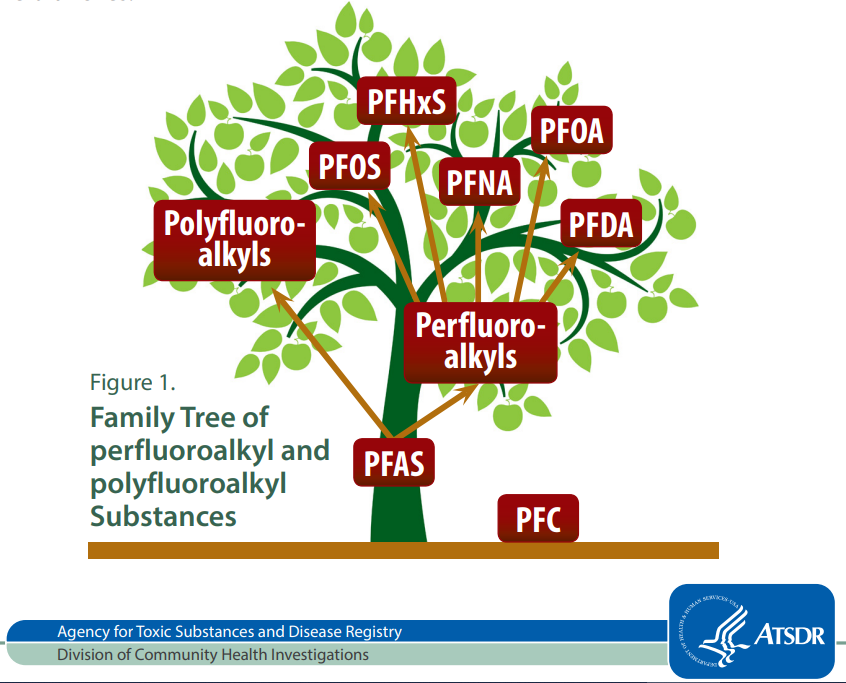These “Forever Chemicals” have existed for what seems like forever, but they’ve just recently begun making headlines. Here’s what you need to know about these troubling compounds.
In the world we live in today, the alphabet soup of acronyms for both good and bad substances can make your brain feel like mush. But there’s one that you’ve probably seen popping up more and more. And it’s one worth remembering.
PFAS, or “Forever Chemicals” are a class of man-made chemicals that are widely used (as in, they’ve been found in everything from human blood to arctic snow), and nearly impossible to destroy.
PFAS 101: What You Need To Know
How (and why) did these substances come to be? PFAS, short for per- and poly-fluoroalkyl substances, were initially created for their stunning ability to resist water, oil, heat, and grease. Invented back in the 1940s by the makers of Teflon, they’re found in items such as non-stick cookware, waterproof clothing, and food packaging. PFAS are persistent in the environment and are so resistant that it’s still not known exactly how long it takes for them to fully break down.
Since their birth in the ‘40s, PFAS have been known under many different names. Teflon, BPA, BPB, PFOS, PFNA, the list goes on. For consumers, this makes things unnecessarily confusing. Now, the more than 12,000 compounds that make up some type of “Forever Chemical” are known under the name of PFAS.

The Trouble With PFAS
Mounting concern surrounding PFAS stems mainly from their impact on human health. These chemicals have been linked to many health issues, including reproductive problems like infertility and severe birth defects, liver damage, lowered immunity, and an increased risk of certain cancers. Even minimal amounts of PFAS can cause serious health effects. Because PFAS are virtually impossible to destroy, the fear of what may occur as a result of longstanding exposure to the chemicals is great.
Because PFAS are now present in nearly every human on Earth, studying their exact effects is difficult to understand. What we do know is that reducing exposure to these chemicals has never been more essential.
The Future Of PFAS
So, what’s going to happen to these dangerous substances? It can feel like Forever Chemicals will be around as long as their name suggests. But the first step to a cleaner and safer world is mitigating the creation of these substances. While nationwide legislation around PFAS is moving slowly, 12 states across the country have already moved to ban PFAS in some (or all) products in the next few years. Nationally, the EPA has created new legislation that requires testing and removal of PFAS in drinking water. But nothing happens overnight. Until then, learn how to avoid PFAS with practical tips that can help you reduce your exposure to these chemicals:
How To Avoid PFAS: 8 Tips
1. Avoid Non-Stick Cookware
Remember Teflon? It was the original PFAS. Since then, PFAS in cookware hasn’t gone away, even though the particular compound that makes up Teflon itself is now banned. Instead, the forever chemicals in kitchenware have shape-shifted, rebranding themselves into new names. Because of this, it’s difficult to trust most non-stick cookware options, even those that claim to be “PFOS-free.” That’s because PFOS is only one of thousands of types of PFAS chemicals.
Want a safe bet that saves you a headache? Fill your kitchen with reliable options that avoid labeling confusion. These include cast iron, carbon steel, and 100% ceramic cookware. These long-standing chef favorites are durable, chemical-free, and work like a charm.
Extra Tip: Think of your cookware just like you think of your food. Ask questions about what it’s made from, how it’s made, and if it’s healthy/safe for you. Keep gathering information until you have the facts to make an informed decision!
2. Invest In A Water Filter
A recent study of tap water sources across the U.S. ended with a startling statistic: over 45% of tap water contains some type of PFAS.
The good news? New federal regulations will require testing and remediation to ensure the safety of our water. But, until then, consider taking matters into your own hands. Several water filters, both below countertop and pitcher options, are currently designed to successfully remove PFAS from water. However, not all filters are the same. Look for filters that are certified by a third-party source, like the National Sanitation Foundation or the Water Quality Association.
3. Choose Natural Cleaning Products
Planning on keeping your home extra clean in order to avoid PFAS? To make sure your efforts aren’t in vain, take a close look at your cleaning products. Many conventional cleaners contain these chemicals, some in high amounts.
But, safe and super-effective cleaning solutions abound! We love Meliora products. They are made with simple ingredients like baking soda and coconut oil, and are always PFAS-free. Look for certifications like MADE SAFE to know that the products you choose are as clean as they look.
4. Stay Away From Packaged Food
PFAs can leach into food from packaging materials, such as microwave popcorn bags and fast food wrappers. Limit your consumption of processed and packaged foods, and opt for fresh, whole foods whenever possible.
Bonus Tip: When you head to the store, bring fabric bags to place bulk produce and dried goods in. You’ll reduce your plastic use and make sure that your food items are only touching natural materials.
5. Be Wary Of Fish Sources
While fish is a great source of healthy protein, some types of fish are exceedingly high in PFAS. Sadly, many rivers and other bodies of water are highly polluted, and these pollutants carry on to the fish living nearby.
Freshwater fish are found to have very high levels of PFAS, and should be avoided in most areas. When purchasing fish from a new area, it’s advised to research any advisories that may be in place for that source.
6. Purchase Clothing Made Of Natural Materials
PFAS are commonly found (in quite high levels) in clothing that has waterproof, water-resistant, or stain-resistant qualities. This means that things like workout clothes, rain layers, and even your everyday shirt likely contain these chemicals.
While many companies, such as Patagonia, have pledged to phase out all PFAS in the coming years, many safe alternatives already exist. And one of the ways to ensure clean clothing is by starting with natural materials. Look for items made from 100% organic cotton, hemp, and even bamboo. Just be sure and double-check that the item you purchase does not contain any added chemicals or treatments.
7. Read Your Personal Care Product Labels
Products like shampoo, soap, and beauty items are commonly made with Forever Chemicals. Your skin is your body's biggest organ, so take extra caution when purchasing skin and hair products.
Our favorite way to shop clean for personal care is by using a retailer that only stocks PFAS-free products. Credo Beauty is a fantastic source that carefully audits each product it carries.
8. Cook At Home
As more and more research comes out about PFAS, a clear link between diet and PFAS levels is developing. And, more than a particular type of food, these facts are talking about how people eat. One study found that people who eat at home the most also have the lowest levels of PFAS. When you eat at home, your food is less likely to have come in contact with grease-proof, PFAS-lined containers. And, you have more control over the cookware that’s used to make it.
Bonus Tip: Work on turning your kitchen into a PFAS-free zone. After you switch to those safe pots and pans, make the switch to natural, 100% biobased cooking and eating utensils.





